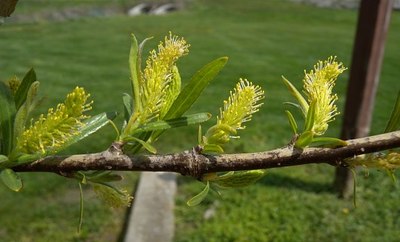Common Name: sandbar willow
Scientific Name:
Family: Salicaceae
Genus: Salix
Species: S. interior
Hardiness Zone: 3
Height: 5 to 10 ft
Width: 5 to 10 ft
Common characteristics:
Sandbar willow is a multistemmed medium-sized shrub with smooth to slightly rough gray bark. Large, dense stands are often formed from numerous root suckers especially near water edges. Leaves grow alternately on the branch and are linear to narrowly oblong with a pointed tip. They have a serrated margin, dark green on the upper side and the underside. The fruit is a small capsule about 5 to 10 mm long, yellowish when mature, and pear-shaped to club-shaped. The capsule splits into two halves when mature, releasing the cottony seed that spreads with the wind.
Where it grows:
Grows in moist to wet soils, most commonly along shorelines and river banks, and other wet sites. Does best in full sun.
How it’s used:
A common use for Salix interior is erosion control. It may be used in stream bank and lakeshore restoration projects. They are well suited for growing in areas with a high water table. Once it is planted, little to no care is required.
Ecosystem services:
In its native range, it is a valuable species to wildlife. Various bird species use sandbar willow for shelter and it provides forage for deer.
Where it is native to:
Native to the eastern and central United States but not into the southeastern corner of the country.
Problems:
It spreads aggressively and may become invasive in some regions. It has the potential to quickly overtake habitats of more desirable plants.
References:
USDA NRCS Plant Fact Sheet
North Dakota State University Agriculture and Extension
